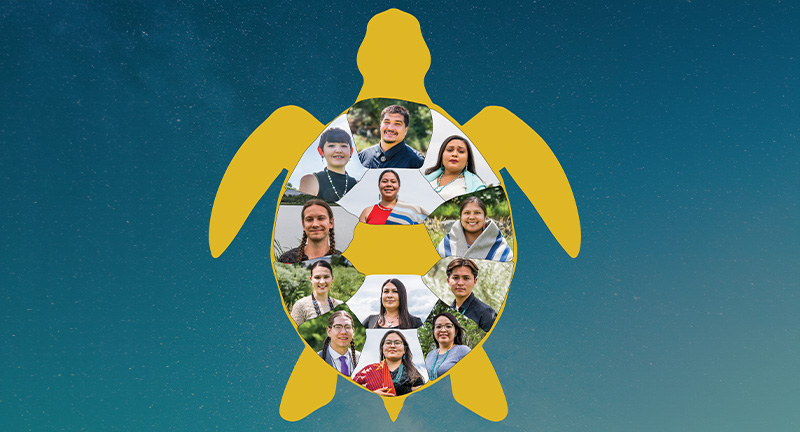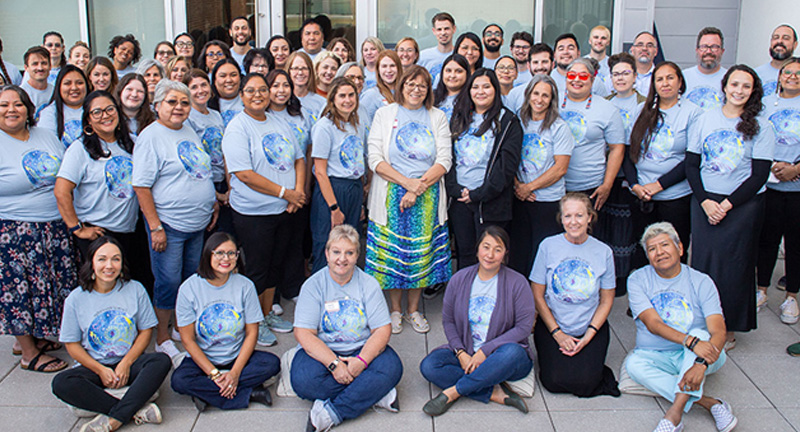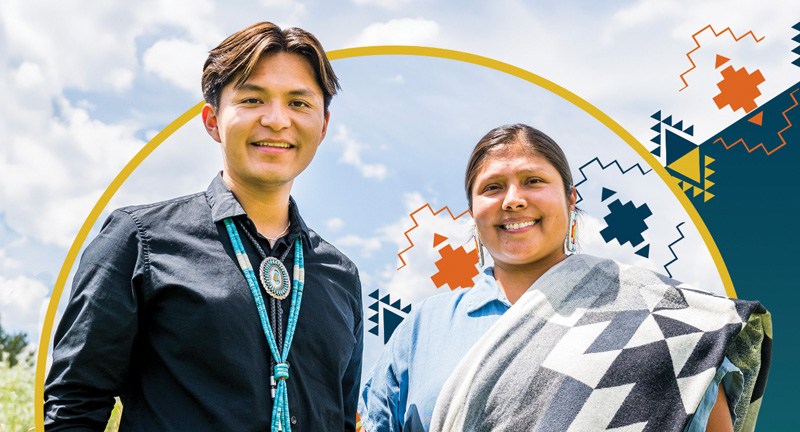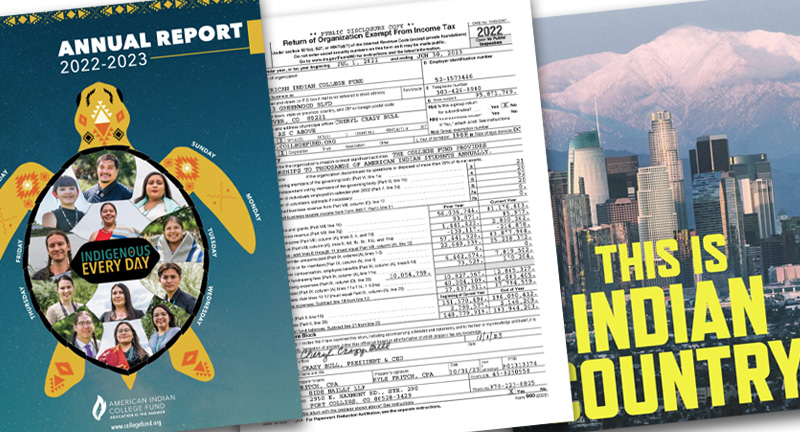by Cheryl LaRose, Keweenaw Bay Ojibwa Community College Restorative Teachings Project Director
“Elders are a bridge to the past and a passport to the future!”
(Sigafus, 2017).
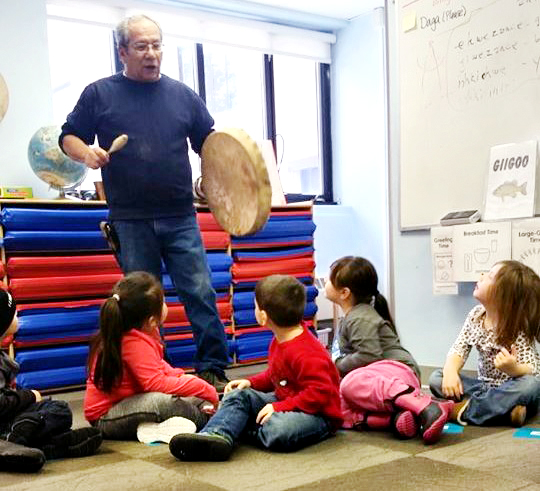
A KBOCC Restorative Teachings Tribal Elder and cultural consultant teaching an Ojibwe song to the Migiizinsag (Little Eagles) children.
Tribal elders are an integral part of the Restorative Teachings program, serving as an important link from past to future, and Keweenaw Bay Ojibwa Community College’s program is no different (KBOCC).
When the tribal elder who serves as the program’s cultural consultant was interviewed for the position, honesty, integrity, and respect emanated from him as he looked at each of the program’s employees in the eyes and told the stories of the Ojibwe past.

The KBOCC Restorative Teachings Tribal Elder cultural consultant shows a drum to the Migiizinsag (Little Eagles) children.
It was his Ojibwe storytelling that led the KBOCC Culture Committee Meeting. He engaged and guided us across the bridge. He used Ojibwe storytelling to talk about the Ojibwe teachings through hands on and engaging activities. Most importantly, the Ojibwe language could be shared with the tribal elder and Migiizinsag (Little Eagles) children, parents and teachers. As the KBOCC Committee Members listened, he took us back and forth across the bridge from the past and into the present using his storytelling to guide us to through future planning and implementing for the children attending Migiizinsag (Little Eagles).
On the first day, the cultural consultant insisted that he arrive at a time when parents were dropping off their children. He knew how important it was to build strong relationships with parents to become a part of the Migiizinsag (Little Eagles) “family.” He was constructing the framework for his bridge. The tribal elder continues to come into the Migiizinsag (Little Eagles) classroom on a weekly basis and meets with the Migiizinsag (Little Eagles) teachers on a monthly basis to envision the future.

Migiizinsag (Little Eagles) children using sage for positive feelings.
The cultural consultant wisely, carefully, and gently shares his Ojibwe knowledge with humility and pride. The KBOCC Cultural Committee developed a fundamental plan for his Ojibwe teachings. In addition, he made sure that some of the Ojibwe teachings would come from the interest and questions from the children and their families.
The Migiizinsag (Little Eagles) children connected and engaged with the tribal elder cultural consultant immediately. He began teaching the children Ojibwe words, songs and teachings such as the talking stick, drumming, sage, and much more.
Each Ojibwe storytelling experience intrigued the children. When he introduced the talking stick, he began with the past by identifying with the following statement, “Whoever holds the talking stick has within his hands the sacred power of words (Locust, 1998).”
He highlighted the present by telling the children that Circle Time in the classroom is similar to having a tribal meeting or a family gathering. He emphasized that the child holding the stick, is the speaker and that the other children must be quiet and listen. The talking stick will “uphold the promise” that all of the children who wish to speak have the opportunity to share their ideas or experiences.
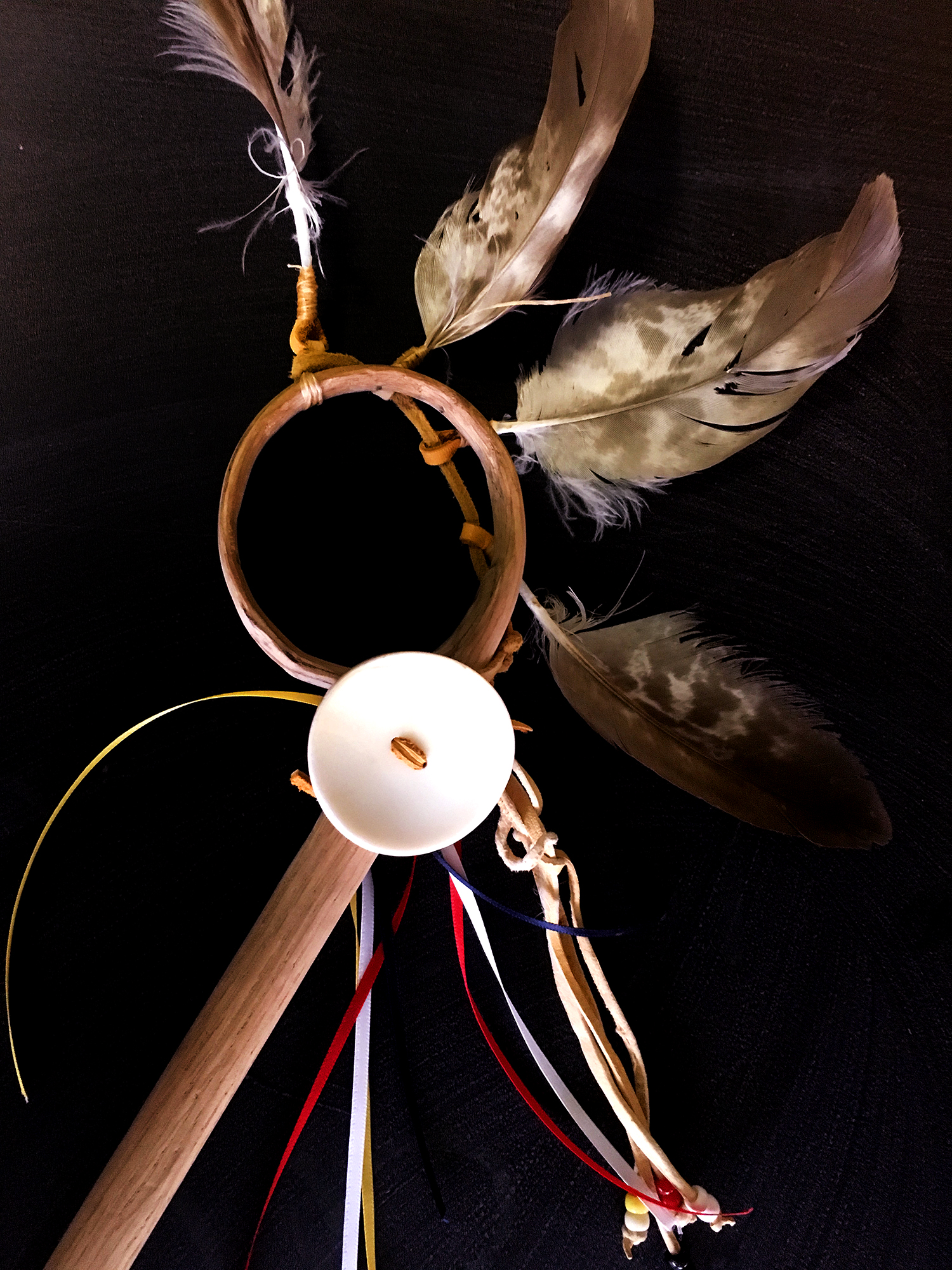
Migiizinsag (Little Eagles) talking stick with eagle feathers, beads and four colors of yellow, white, red and black.
One child asked, “Why are feathers tied on the stick?”
The tribal elder stepped back into history and clarified that the golden eagle feathers would give the child courage to speak truthfully and wisely.
“Look at the beads, why are they hanging from the stick?” asked another child.
The tribal elder talked about the four directions about being the four elements of life, the four seasons, the four states of well-being, the four stages of life, and he especially emphasized the four colors of man. He talked about diversity and how people have different skin color.
His passport for the future exists within the Ojibwe teachings. The future is having courageous children who are leaders, children who are not afraid to speak in front of others, children who take turns, children who respect and value each other’s ideas and experience, children who can listen and ask questions about their Ojibwa culture, children who understand and respect diversity in our world and children who speak truthful from their hearts.
Our cultural consultant is a tribal elder and a bridge to the past and our passport to the future.


